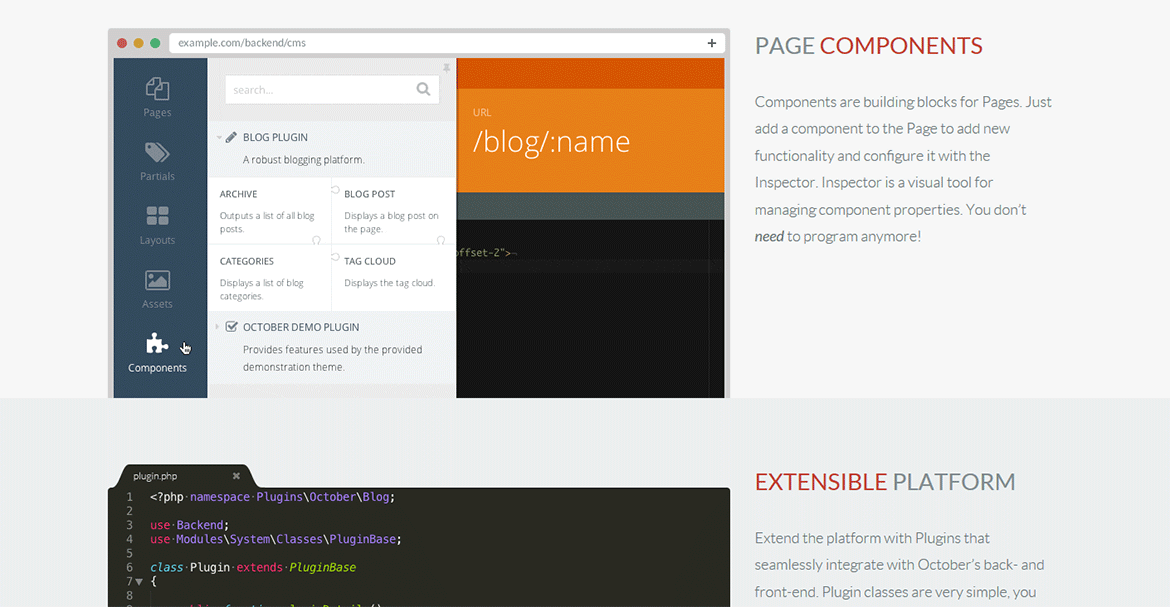In the planning stages for our recent website redevelopment we were looking around for a new CMS. We had used TextPattern on our old site and while I suppose it did everything we needed, it was a bit behind the times compared to some of the really outstanding new CMS's around now.
I thought using a CMS based on the Laravel framework would be ideal, since I am quite familiar with the framework and extending a CMS based on it should be easier as a result. After some research I decided October CMS was the most promising Laravel based CMS out there. I'd used it before a little and thought it looked like it had all the features I needed. Ultimately, I decided it has a lot of promise but it's not quite ready for prime time yet. In the end we decided to use Craft CMS to power our new site.
Application boilerplate, not really a CMS
One of the first things you notice when you start messing around with October CMS is that it isn't so much a dedicated CMS, but more of a kind of application starting point. Out of the box it has only very basic CMS functionality, you need to install at least 4 or 5 plugins to really make it usable as a proper CMS. Even then, you'll really want to write some of your own plugins to get the custom functionality you'll no doubt need in your project.


